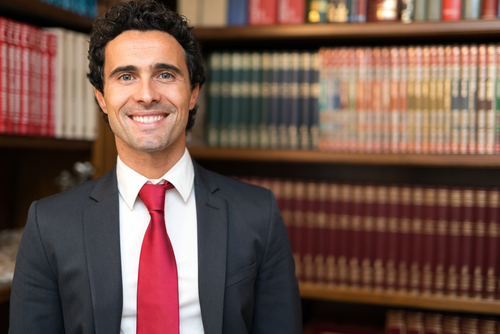
Every year schools are looking for ways to improve their system and provide students with the best possible education, which is where good education leadership comes into play. Surprisingly enough, many people involved in their local educational system are uncertain as to what defines educational leadership. Education leadership is a combined process that utilizes the forces, knowledge and talents of teachers, parents and teachers with the goal of improving not just the quality of education but also the education system itself.
What is Education Leadership?
The main purpose of educational leadership is to guarantee academic success through process, training and material improvements. Unfortunately, this success cannot be guaranteed or even accomplished without the help and collaboration of everyone involved, including the students, parents, teachers, policymakers and even the general public. From a business standpoint, educational leadership is a method of quality control and academic management. Here is the actual process of educational leadership:
- Create a vision of academic success for all students regardless of socio-economical levels
- Aspire to maintain a responsive, healthy and safe learning environment
- Delegate responsibility to everyone involved
- Improve curriculum content and instructional methods
- Education systems obtain and adapt current management tools and techniques
What Jobs are in Educational Leadership?

Earning a degree in educational leadership prepares students for various jobs within an education system, including elementary, middle and high schools, as well as colleges and universities. Most states do require teachers and school administrators working in public schools to be licensed, so aspiring professionals will need to pass state licensing exams in addition to earning the required degrees. Graduates of education leadership degree programs, particularly master’s degrees, may find the following occupations available to them.
- Principal
- Assistant Principal
- Dean of Students or Faculty
- Elementary, Middle or High School Superintendent
- College Provost
- District Administrator
- Supervisor or Director
- Instructional Coordinator
- University Registrar
Roles and Responsibilities of Key Shareholders
This section provides a more expansive exploration of the various roles each shareholder in the system of education leadership will play. Each person in this community draws on both hard and soft skills, leverages community support, and uses personal vision to meet the needs of their educational institution or system. While each is important, they also must function in concert to achieve the goals outlined in the larger educational mission statements and ensure the success of all students.
Principal
This individual is responsible for shaping, outlining, and guiding the educational mission of a particular primary or secondary school. They set the tone of high expectations and standards for the entire student body and work to shape an environment that is conducive to the success of every student. Until approximately thirty years ago, principals were seen as managers, and the standards of excellence were largely reserved for students deemed to be worthy of college education. By shifting the role of the principal to a more active and invested one, the expectation of maximum achievement of excellence on the part of every student became a primary tool for school success.
Today, they are also charged with the responsibility of creating an environment that allows both children and adults to focus primarily on the activity of learning. This entails creating a space that is safe and nurturing, a positive and trusting environment in which each student or teacher can focus on meeting the highest standards and giving their best. So-called soft skills required are the ability to connect with the student body and the faculty, to invest time and energy in structural problem solving, applying available resources to enrich the school environment, discerning which outside factors may be causing problems, and working with other individuals in both the educational system and the wider community to solve these issues.
Effective principals are those who take involvement in community seriously. Both within the learning environment and in the broader human community, these individuals work to solidify relationships, deepen investments in educational excellence, and minimize student and teacher isolation. They draw all shareholders together and encourage them to focus their energy towards a common goal—the success and wellbeing of all students and the achievement of consistently high standards. More than simply managing resources and situations, they actively work to shape them and promote a greater sense of connection between school and community.
Assistant Principal
Gone are the days when this role was unilaterally associated with student disciplinary action. Today, the assistant principal functions in much the same way that principals once did. They are managers and builders of instructional leadership. In addition to maintaining the codes of conduct for students and faculty, assistant principals assist their immediate superiors to build an environment that is focused on education.
They facilitate smooth functionality for student activities and endeavors, act as a liaison between the principal and members of the larger community. Additionally, while enforcing the rules, they may engage with students and their guardians to resolve behavioral issues, maintain the systems for attendance, ensure the enactment of the principal’s plans for academic achievement, continuously monitor the performance of these plans as they relate to standards set by regional, state, or federal guidelines, and many more regulatory tasks.
Dean of Students or Faculty
While the Dean of Students may be seen as largely an administrative role, it involves a great deal of communication with students and student service groups. These individuals coordinate and help to orchestrate student events, resolve individual and group student issues and concerns, communicate and work with different departments in an effort to effectively and efficiently ensure operations, and direct admissions processes.
A Dean of Faculty performs much the same role, but focuses their efforts on the creation of opportunities for faculty. They may work with the university resources to create degree programs that maximally utilize the skill sets of department faculty, monitoring standards and goals set by the board of regents and other higher level bodies. They oversee tenure and promotion opportunities, hiring new faculty members, and nurturing junior or non-tenured professors and instructors. They also ensure that all faculty are advised of and have the opportunity to pursue ongoing educational workshops and necessary updates to their skills.
School Superintendent

Depending upon the individual skill set and ancillary education, this role can serve primary, middle grade, or high school levels. While often characterized as a mid-level bureaucratic role, these individuals provide a vital link between the school board, the individuals schools in a district, and the state or federal oversight authorities. They are responsible for managing the district’s enactment of laws, rules, and policies.
They’re also knowledgeable about finances of individual schools, districts, and the resources available for these institutions. They manage the political dynamics between the larger community and the schools and apply and maintain all appropriate legal requirements at every level. To say they are simply bureaucrats is to ignore their vital nature of their role in the educational and broader community. Not only are they required to maintain current knowledge of financial, political, and legal matters, but they must critically appraise the needs and goals of a complex educational landscape under their supervision.
College Provost
A college is essentially a department within a university. Provosts are analogous to department chairs in their duties and responsibilities. They fulfill many of the same duties and responsibilities as primary and secondary principals, but do so at the post-secondary level. In addition, they work with other departments of colleges to ensure that complimentary programs are offered and maintained. They may participate directly in the recruitment of new faculty members or fulfill a supervisory role.
They also work to fundraise for the college, participating as members of a wider community. They support the university community by spearheading college participation in activities, larger goal-oriented initiatives, and other academic interactions. Perhaps most importantly, they work to provide opportunities and help members of faculty and the student body to serve more expansive roles in the community by creating and shepherding leadership opportunities, mentoring programs, and other community-focused initiatives.
District Administrators and School Supervisors
These are grouped together, largely because they encompass several of the roles already described. In the case of District Administrators, superintendents are considered to fulfill these duties. However, this role can also be applied to those who oversee special education programs, accounting and financial allocations, and other highly specialized foci.
School supervisors are essentially principals, although their work load and description of responsibilities an vary depending upon the level of education enacted in their institutions. Daycare supervisors provide guidance for pre-K children and afterschool programs hosted by their institutions and craft the educational vision of their organizations in a similar fashion to principals. The same may be said of any educational entity that falls beyond the scope of primary and secondary education.
Instructional Coordinator
These individuals design curriculums and oversee their enactment in the larger context of school systems. If there were a truly lateral and comprehensive position within the education leadership system, it would be that of coordinator. Beyond developing and implementing effective and comprehensive curriculums, tailored to maintain success and elevate students, they also pursue many other goals.
They organize and implement teacher training requirements and opportunities, to ensure that educators have all the tools they need to effectively educate their students. This particular domain also includes conferences, learning modules, certifications, and other opportunities for educator enrichment. In essence, while they are tasked with ensuring the education of students, they also oversee the education, support, and advancement of faculty. Because this is a broad area of education leadership, individuals who pursue this educational and career path will often specialize their focus. They might oversee a particular grade or suite of grades or provide enhancement and support for faculty in a particular discipline or special topic—e.g. special education, science, arts etc.
University Registrar
This is perhaps one of the most complex and challenging roles to fulfill in the university system. Traditionally, the registrar focuses on course offerings, degree audits, curriculum management and registration, credit transfer, and transcript fulfillment. But today, this job entails quite a bit more. They are essentially the nerve centers for a number of vital endeavors.
Not only are they charged with protecting student data from increasingly dangerous predators, but they must also find ways to make it actionable and accessible for those who need to utilize it—i.e. educators and administrators. They must also find a middle path into encouraging student-led educational and civic endeavors while providing an appropriate amount of guidance and supervision, which is commonly known as scaffolding. Lastly, they serve as a vital bridge between academic and administrative worlds, ensuring that curriculums are properly met within the classrooms and the university body functions well in every other respect.
Degrees in Educational Leadership
Candidates interested in careers in educational leadership can choose from programs at the bachelor’s, master’s and doctoral degree levels. Although there are some undergraduate educational leadership programs, these are rare because graduate degrees are usually required for educational leadership jobs. Bachelor’s degrees are sufficient for teaching positions, however many individuals choose to later advance their education.
Those enrolling in educational leadership programs can typically choose from a Master of Arts, Master of Science or Master of Education with a concentration in educational leadership, K-12 administration, religious school education or school principal. Students in the educational leadership programs complete coursework and internships and also complete research projects. Course topics include student affairs, school finance and law, communication, community relations and student affairs, professional development and leadership, strategic and organizational planning, and adult affairs. Students who want careers in academia or research often pursue doctorate degrees.
Career & Wage Outlook in Educational Leadership

Graduates of educational leadership programs are qualified for various positions within various academic facilities. The U.S. Bureau of Labor Statistics predicts positive job growth for all these careers as well as very good wages. Here is the career outlook for the decade of 2016-2026 for several occupations as well as the median wages earned in 2017 according to the Bureau.
- Elementary, Middle and High School Principal – 8 percent – $94,390
- Elementary and Secondary School Education Administrators – 9 percent – $97,440
- Post-Secondary Education Administrator- 10 percent – $92,360
- Instructional Coordinator – 11 percent – $63,750
- Training and Development Manager – 10 percent – $108,250
- Social and Community Service Manager – 18 percent – $61,100
It’s often been said that an education system is only as good as its education leaders. With so many career options available to graduates of educational leadership programs, it’s understandable why so many candidates are pursuing the education that will prepare them to play a role in improving our education.
Related Resources:
- 50 Most Affordable Online Master’s in Education Administration
- How Does a Master’s in Leadership Differ From an MBA?
- What Can I Do with a Degree in Education Leadership?
- What Can You Do with a Master’s in Leadership?
- Who Should Consider a Master’s in Leadership?
- 5 Benefits of Earning a Master’s in Leadership
- 5 Career Choices with a Master’s in Leadership
- Top 30 Most Affordable Master’s in Leadership Online Programs
- Top 50 Most Affordable Master’s in Leadership and Management Online Programs